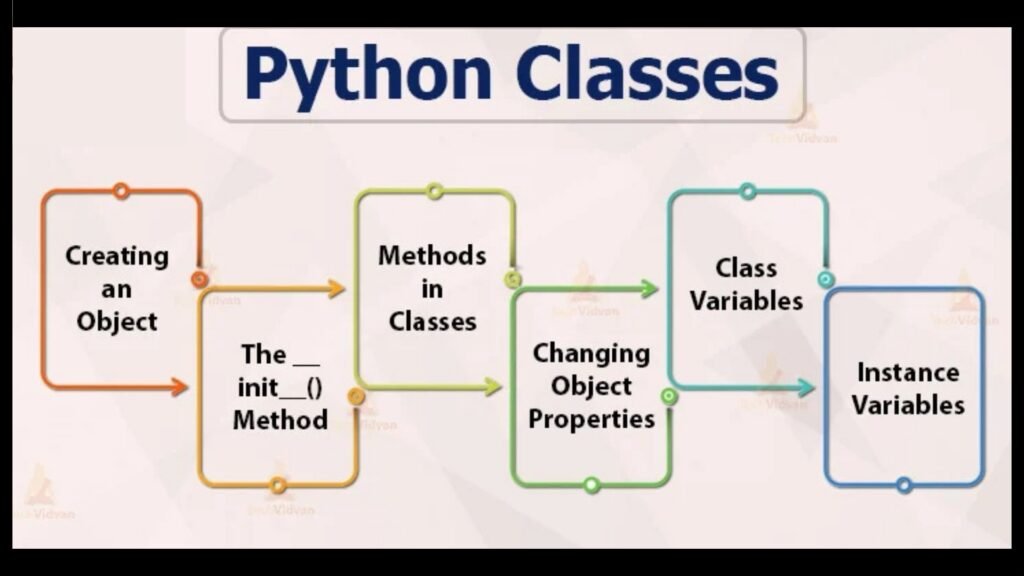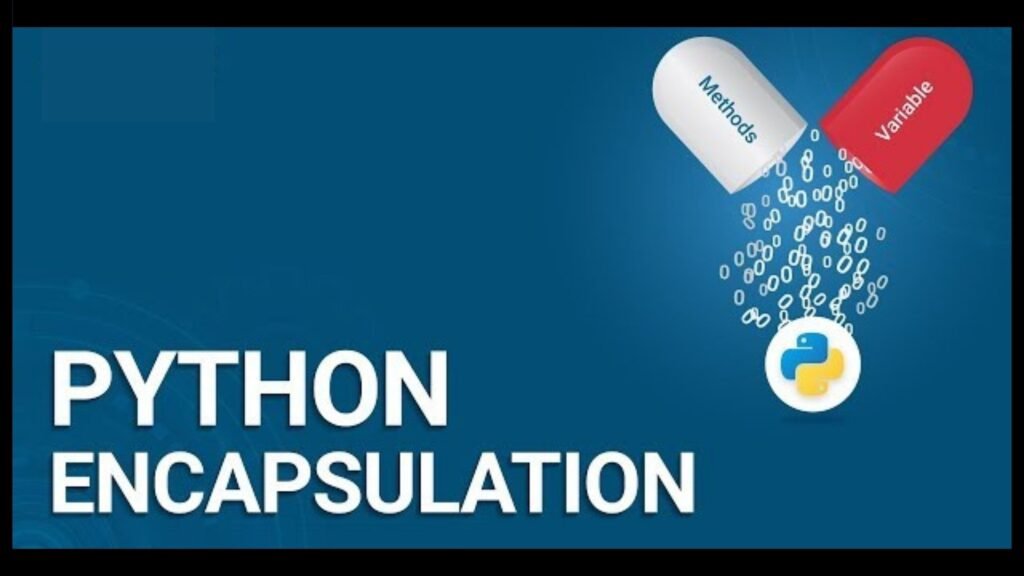In the diverse world of software development, Python has emerged as one of the most favored languages due to its versatility and simplicity. However, to unlock its full potential, understanding the nuances of Object-Oriented Programming (OOP) in Python is crucial. This blog post will guide you through advanced techniques in Python’s OOP, designed to enhance your programming prowess and effectiveness in building complex software systems.
Whether you’re a seasoned Python developer or a programming enthusiast eager to expand your skills, this guide offers valuable insights. You’ll explore topics such as inheritance, polymorphism, and metaprogramming. Get ready to elevate your coding skills and create more efficient, readable, and maintainable code.
Advanced Concepts in Python’s Object-Oriented Programming
Python’s OOP paradigm allows developers to create robust and reusable code by modeling real-world entities. By mastering this approach, developers can build applications that are flexible and intuitive. OOP emphasizes organizing code into objects that combine data and behavior, facilitating modularity and scalability in software projects.
Understanding advanced OOP concepts is essential for tackling more sophisticated programming challenges. These concepts include inheritance, encapsulation, and polymorphism, each offering unique benefits in structuring code. By leveraging these principles, developers can create more adaptable and efficient software architectures.
At its core, OOP in Python enhances code readability and maintainability. This approach encourages the separation of concerns, making it easier to manage large codebases. Developers who master OOP techniques can work more efficiently and collaborate effectively in team environments, ultimately producing higher-quality software.
Python Classes and Objects
Classes and objects form the backbone of Python’s OOP model. Classes act as blueprints for objects, defining the properties and behaviors that the objects will exhibit. Creating and manipulating objects allows developers to model complex systems and manage data more effectively.

In Python, classes provide a flexible framework for defining new data types. Through classes, developers can encapsulate data and functions into a single entity, simplifying code organization. By using objects, developers gain the ability to manipulate data systematically, reducing complexity and enhancing code clarity.
Mastering the use of classes and objects involves understanding how to define constructors, methods, and attributes. This knowledge empowers developers to create intricate data models and develop applications that mirror real-world scenarios. With practice, developers can harness Python’s class mechanisms to streamline their code and maximize efficiency.

The Power of Inheritance in Python
Inheritance is a powerful feature in Python’s OOP paradigm, allowing developers to create new classes based on existing ones. This mechanism promotes code reuse, enabling developers to extend and enhance functionality without duplicating efforts. By inheriting properties and methods, derived classes build upon the foundation established by their parent classes.
The advantages of inheritance go beyond mere code reuse. By structuring classes hierarchically, developers can implement polymorphism, allowing objects to be treated as instances of their parent class. This flexibility facilitates the creation of versatile and adaptable software systems that can easily evolve to meet changing requirements.
To effectively harness inheritance, developers should understand how to use the `super()` function to access methods from parent classes. This technique allows for customizing or extending inherited functionality while maintaining a clean and readable codebase. By mastering inheritance, developers can create sophisticated and scalable applications with ease.
Understanding Multiple Inheritance in Python
Multiple inheritance is a unique feature of Python that allows a class to inherit attributes and methods from more than one parent class. This capability provides developers with the flexibility to compose complex class hierarchies and extend functionality across multiple dimensions. When used judiciously, multiple inheritance can lead to powerful and versatile software designs.
However, multiple inheritance can also introduce challenges, particularly in managing method resolution order (MRO). Python’s C3 linearization algorithm helps address these issues by determining the order in which methods are inherited from parent classes. Developers should familiarize themselves with MRO to effectively leverage multiple inheritance while avoiding potential pitfalls.
By understanding the benefits and complexities of multiple inheritance, developers can create rich and dynamic class structures. This ability opens up new possibilities for designing software systems that are both flexible and efficient, providing a competitive edge in software development.
Encapsulation and Access Control in Python
Encapsulation is a fundamental principle in Python’s OOP, promoting data hiding and access control. By encapsulating data within classes, developers can protect sensitive information and prevent unauthorized access. This concept ensures that objects maintain integrity and consistency by exposing only relevant interfaces to external code.
In Python, encapsulation is achieved through the use of private and protected attributes. Although Python does not enforce strict access control, developers can use naming conventions to indicate the intended level of visibility for class members. By leading attribute names with underscores, developers communicate which attributes are meant for internal use only.

Effective encapsulation enhances code maintainability and reduces the risk of unintended side effects. By carefully managing how data is accessed and modified, developers can create robust and reliable applications. Encapsulation fosters clear boundaries within classes, enabling developers to focus on functionality and logic without being bogged down by implementation details.
Overriding and Super Refining Class Behavior
Method overriding is a powerful technique in Python’s OOP, allowing developers to modify or enhance the behavior of inherited methods. By overriding methods in derived classes, developers can tailor functionality to specific needs while preserving the interface established by the parent class. This approach promotes code reusability and adaptability.
The `super()` function plays a crucial role in method overriding, enabling developers to call methods from parent classes within overridden methods. This capability allows for extending or refining inherited behavior without duplicating code. By using `super()`, developers can maintain a clean and organized codebase while implementing customized functionality.
Overriding methods can lead to more dynamic and versatile software designs. By leveraging this technique, developers can create flexible applications that respond to evolving requirements and user needs. Method overriding empowers developers to build upon existing code and extend its capabilities in meaningful ways.
The Role of Abstract Classes and Interfaces in Python
Abstract classes and interfaces are essential components of Python’s OOP model, providing a framework for defining common behavior across multiple classes. By using abstract classes, developers can create blueprints for other classes, specifying methods that must be implemented by derived classes. This approach promotes consistency and standardization within codebases.
In Python, abstract classes are defined using the `abc` module, which allows developers to declare abstract methods that have no implementation. Subclasses of abstract classes must provide concrete implementations for these methods, ensuring that they adhere to a consistent interface. This mechanism enforces a clear contract between classes, facilitating collaboration and code reuse.
Interfaces in Python are not an official part of the language but can be simulated using abstract classes. By defining interfaces, developers can ensure that different classes share a common set of methods, enabling polymorphism and interchangeability. Abstract classes and interfaces enhance code organization and foster the development of robust and maintainable software systems.
Method Resolution Order (MRO) and the C3 Linearization
Method Resolution Order (MRO) is a critical concept in Python’s OOP, determining the sequence in which methods are inherited in multiple inheritance scenarios. Understanding MRO is essential for effectively managing method calls and resolving conflicts arising from multiple parent classes. Python uses the C3 linearization algorithm to calculate MRO, ensuring consistency and predictability.
The C3 linearization algorithm provides a deterministic approach to resolving MRO, taking into account the class hierarchy and the order in which classes are defined. This algorithm ensures that derived classes have precedence over their ancestors while maintaining a consistent and predictable order for method resolution.
By understanding MRO and the C3 linearization algorithm, developers can effectively leverage multiple inheritance without encountering unexpected behavior. This knowledge empowers developers to create complex class hierarchies and design sophisticated software systems that harness the full potential of Python’s OOP model.
Python’s @classmethod and @staticmethod Use Cases and Best Practices
Python’s `@classmethod` and `@staticmethod` decorators provide alternative ways to define methods within classes, offering unique use cases and benefits. These decorators allow developers to create methods that are not tied to specific instances of a class, enhancing flexibility and code organization.
The `@classmethod` decorator defines methods that take the class itself as the first argument, allowing developers to access class-level attributes and methods. This capability is particularly useful for implementing factory methods and managing class-level state. `@classmethod` enhances code modularity and facilitates the creation of versatile utility methods.
In contrast, the `@staticmethod` decorator defines methods that do not take any implicit first arguments, making them independent of both instances and classes. This approach is ideal for encapsulating functionality that is logically related to a class but does not require access to class or instance-specific data. `@staticmethod` promotes code clarity and organization by grouping related functions within the class definition.
Understanding self and cls in Python Methods
The `self` and `cls` keywords play vital roles in Python’s OOP, serving as references to instances and classes, respectively. Understanding these keywords is essential for writing effective and efficient Python code, as they facilitate access to instance and class-level data and functionality.
The `self` keyword is used within instance methods to refer to the current instance of a class, allowing developers to access attributes and methods specific to that instance. By using `self`, developers can manipulate instance data and customize behavior for individual objects, enhancing code flexibility and adaptability.
The `cls` keyword is used within class methods to refer to the class itself, enabling developers to access class-level attributes and methods. By using `cls`, developers can implement functionality that applies to the entire class rather than individual instances, promoting code reusability and maintainability.
Understanding the distinct roles of `self` and `cls` is crucial for mastering Python’s OOP. These keywords enable developers to create dynamic and versatile applications that effectively manage both instance and class-level data. By leveraging `self` and `cls`, developers can write more organized and efficient code.
Metaclasses in Python Customizing Class Creation
Metaclasses are a powerful yet advanced feature in Python’s OOP, allowing developers to customize the creation and behavior of classes. By defining metaclasses, developers can intervene in the class construction process, modifying attributes, methods, and even inheritance hierarchies.
In Python, metaclasses are defined by inheriting from the `type` class and overriding its methods. This approach provides developers with control over the class creation process, enabling them to implement custom behavior and enforce constraints. Metaclasses offer a high degree of flexibility and can be used to implement design patterns, validate class definitions, and more.
While metaclasses are a potent tool, they should be used judiciously, as they can introduce complexity and reduce code readability. Developers should familiarize themselves with metaclass concepts and best practices to harness their full potential effectively. By mastering metaclasses, developers can create innovative and tailored solutions to complex programming challenges.
Dynamically Modifying Classes at Runtime
Python’s dynamic nature allows developers to modify classes at runtime, providing unparalleled flexibility and adaptability. By dynamically altering class attributes and methods, developers can create responsive applications that adapt to changing requirements and environments. This capability is particularly useful for implementing plugins, extensions, and other dynamic features.
One approach to dynamic class modification is to assign new attributes or methods to existing classes. This technique allows developers to extend functionality without altering the original class definition, promoting code modularity and reusability. By leveraging Python’s dynamic capabilities, developers can create flexible and adaptable software systems.
Another technique is to use decorators and metaclasses to modify class behavior at runtime. These tools provide developers with control over class construction and execution, enabling them to implement custom logic and enforce constraints. By understanding how to dynamically modify classes, developers can create sophisticated and dynamic applications that respond to evolving needs and requirements.
Property Decorators Getters Setters and Deleters in Python
Property decorators in Python provide a concise and elegant way to manage attribute access and modification, enhancing encapsulation and control. By using property decorators, developers can define getters, setters, and deleters for class attributes, enabling fine-grained management of attribute behavior.
The `@property` decorator defines a method that acts as a getter, allowing developers to access attributes while encapsulating complex logic or validation. This approach promotes code clarity and ensures that attributes are accessed and modified in a controlled manner. By using property decorators, developers can create more robust and reliable applications.

The `@<attribute>.setter` and `@<attribute>.deleter` decorators extend property functionality, allowing developers to define methods for setting and deleting attributes, respectively. This capability enhances data encapsulation and integrity by enforcing validation and constraints during attribute modification. By leveraging property decorators, developers can create intuitive and maintainable code that promotes data consistency and reliability.
The Power of Dunder (Magic) Methods in Python
Dunder methods, also known as magic methods, provide developers with the ability to customize the behavior of Python objects. These special methods, identified by double underscores, enable developers to define how objects interact with operators, built-in functions, and other language constructs.
Examples of dunder methods include `init` for object initialization, `str` for string representation, and `add` for addition. By implementing dunder methods, developers can create intuitive and expressive objects that integrate seamlessly with Python’s syntax and functionality. This approach enhances code readability and usability by allowing objects to behave like built-in types.
Dunder methods play a crucial role in creating flexible and adaptable software designs. By understanding and leveraging these methods, developers can create powerful and dynamic applications that harness the full potential of Python’s OOP model.
Operator Overloading Enhancing Python Classes
Operator overloading is a technique in Python’s OOP that allows developers to define custom behavior for operators when applied to class instances. By implementing operator overloading, developers can create expressive and intuitive objects that interact seamlessly with Python’s syntax.
Operator overloading is achieved by implementing specific dunder methods, such as `add`, `sub`, and `mul`, which define the behavior of addition, subtraction, and multiplication operators, respectively. This approach allows developers to create objects that behave like built-in types, enhancing code readability and usability.
By leveraging operator overloading, developers can create rich and dynamic class interfaces that promote code expressiveness and clarity. This technique empowers developers to build applications that are both intuitive and powerful, enhancing the overall user experience.
Managing Memory with Object Life Cycle and del Method
Memory management is a critical aspect of software development, and understanding Python’s object lifecycle is essential for creating efficient and optimized applications. By mastering the object lifecycle and the `del` method, developers can manage memory effectively and ensure that resources are released appropriately.
The `init` method, often referred to as the constructor, initializes new object instances and allocates memory for attributes and methods. Conversely, the `del` method, known as the destructor, is called when an object is about to be destroyed, allowing developers to release resources and perform cleanup tasks.
While the `del` method provides an opportunity for resource management, developers should exercise caution, as Python’s garbage collector often handles memory management. By understanding the object lifecycle and its implications, developers can create efficient and reliable applications that minimize memory usage and optimize performance.
Customizing Object Instantiation with new and init
Python’s `new` and `init` methods play vital roles in the object instantiation process, providing developers with control over object creation and initialization. While `init` is responsible for setting up new object instances, `new` is responsible for allocating memory and returning a new instance of a class.
The `new` method is particularly useful for customizing the instantiation of immutable objects, such as tuples and strings, or for implementing singletons and other patterns that require control over object creation. By overriding `new`, developers can tailor the instantiation process to specific needs and requirements.
The `init` method complements `new` by configuring object attributes and initializing state. This method enables developers to set up instances with default values, validate input, and establish dependencies. By mastering `new` and `init`, developers can create flexible and adaptable software designs that cater to diverse use cases and scenarios.
Building Efficient Data Structures with Python OOP
Python’s OOP paradigm provides developers with the tools to create efficient and optimized data structures that cater to specific application needs. By leveraging classes and objects, developers can encapsulate data and operations into cohesive units, promoting modularity and reusability.
One approach to building efficient data structures is to define custom classes that implement specific functionalities, such as linked lists, stacks, and queues. By using Python’s OOP capabilities, developers can create data structures that are both expressive and performant, enabling efficient storage and retrieval of data.
Another technique is to leverage Python’s built-in data structures, such as lists, dictionaries, and sets, and extend their functionality through inheritance and composition. By combining these approaches, developers can create sophisticated and flexible data structures that optimize performance and memory usage.
Composition and Delegation in Python
Composition and delegation are powerful techniques in Python’s OOP, allowing developers to build complex systems by combining simpler components. By using composition, developers can create classes that contain instances of other classes, promoting code reusability and modularity.
Delegation is a complementary technique that involves forwarding method calls to contained objects. This approach enables developers to create flexible and dynamic class interfaces that can adapt to changing requirements. By leveraging composition and delegation, developers can build applications that are both robust and maintainable.
These techniques enhance code organization and promote the development of cohesive and adaptable software systems. By understanding and applying composition and delegation, developers can create sophisticated applications that respond effectively to diverse use cases and scenarios.
Polymorphism and Duck Typing in Python
Polymorphism is a key concept in Python’s OOP, allowing developers to write flexible and reusable code that can operate on objects of different types. By using polymorphism, developers can create functions and methods that accept and process objects that share a common interface, promoting code reusability and adaptability.
Duck typing, a dynamic form of polymorphism, is a unique feature of Python that emphasizes behavior over explicit type checking. By using duck typing, developers can write code that operates on any object that implements a required set of methods, regardless of its class or type. This approach promotes code flexibility and reduces coupling between components.
By understanding polymorphism and duck typing, developers can create versatile and dynamic applications that can handle a wide range of inputs and scenarios. These concepts empower developers to write clean and maintainable code that adapts to changing requirements and environments.
The Singleton Pattern in Python Ensuring a Single Instance
The Singleton pattern is a design pattern that ensures only one instance of a class is created, providing a global point of access to that instance. This pattern is particularly useful for managing shared resources, such as configuration settings, logging, and database connections, where multiple instances could cause conflicts or inconsistencies.
In Python, the Singleton pattern can be implemented using various techniques, such as overriding the `new` method or using a metaclass. By implementing the Singleton pattern, developers can ensure that critical resources are managed consistently and efficiently, enhancing application stability and reliability.
The Singleton pattern promotes code organization and modularity by centralizing resource management and reducing duplication. By understanding and applying this pattern, developers can create robust and maintainable software systems that effectively manage shared resources.
Using Mixins for Code Reuse and Extension
Mixins are a powerful tool in Python’s OOP, allowing developers to create reusable and extendable components that can be combined with other classes. By using mixins, developers can define small, focused classes that encapsulate specific behavior, promoting code reusability and modularity.
Mixins are typically used to add additional functionality to existing classes without altering their inheritance hierarchy. This approach allows developers to extend classes with new methods and attributes, enhancing their capabilities and versatility. By leveraging mixins, developers can create flexible and dynamic class structures that adapt to diverse use cases.
The use of mixins enhances code organization and reduces duplication by promoting the separation of concerns. By understanding and applying mixins, developers can create sophisticated and adaptable software systems that respond effectively to changing requirements and environments.
Refactoring to Clean Modular Code Using Python OOP
Refactoring is a critical practice in software development, involving the restructuring of code to improve its readability, maintainability, and performance without altering its external behavior. By using Python’s OOP features, developers can refactor code to create clean and modular applications that are easier to understand and modify.
One approach to refactoring is to identify and eliminate code duplication by extracting common functionality into classes and methods. This process promotes code reuse and reduces redundancy, enhancing code organization and clarity. By refactoring code to use classes and objects, developers can create cohesive and modular software systems.
Another technique is to use design patterns, such as the Factory pattern and the Observer pattern, to structure code and manage dependencies. By applying these patterns, developers can create flexible and scalable applications that are easy to extend and maintain. Refactoring to clean, modular code enhances application quality and promotes the development of robust and reliable software systems.
Decorators and Metaprogramming in Python OOP
Decorators are a powerful feature in Python’s OOP, allowing developers to modify the behavior of functions and methods dynamically. By using decorators, developers can enhance functionality, enforce constraints, and manage cross-cutting concerns, such as logging and authentication, without altering the original code.

Metaprogramming is a complementary technique that involves writing code that manipulates other code, providing developers with control over the execution and behavior of programs. By using metaprogramming, developers can create dynamic and adaptive applications that respond to changing requirements and environments.
Together, decorators and metaprogramming enable developers to create sophisticated and versatile software systems that maximize flexibility and adaptability. By understanding and applying these techniques, developers can create innovative solutions to complex programming challenges.
Testing Object-Oriented Code in Python with Unittest and PyTest
Testing is a critical component of software development, ensuring that code behaves as expected and meets quality standards. By using testing frameworks such as Unittest and PyTest, developers can create automated tests for object-oriented code, enhancing reliability and maintainability.
Unittest is a built-in Python testing framework that provides a structured approach to testing, allowing developers to define and organize test cases and suites. By using Unittest, developers can write tests that ensure code correctness and prevent regressions, promoting code quality and stability.
PyTest is an alternative testing framework that offers a more flexible and concise approach to testing, supporting fixtures, parameterization, and plugins. By using PyTest, developers can create comprehensive and scalable test suites that cover a wide range of scenarios and use cases. Testing object-oriented code with Unittest and PyTest ensures application reliability and enhances software quality.
In conclusion, mastering advanced OOP strategies in Python empowers developers to create efficient, scalable, and maintainable software systems. By understanding and applying concepts such as inheritance, polymorphism, and metaprogramming, developers can elevate their coding skills and build applications that respond effectively to diverse requirements and challenges. Whether you’re a seasoned Python developer or a programming enthusiast, exploring these techniques will enhance your proficiency and confidence in creating robust and sophisticated software solutions.
Frequently Asked Questions
- What is the Singleton pattern in Python OOP, and when should it be used?
- The Singleton pattern ensures that a class has only one instance and provides a global point of access to that instance. It is often used for shared resources like configuration objects or connections that need to be managed centrally.
- How do mixins differ from traditional inheritance in Python?
- Mixins are used to add specific behaviors or properties to a class without forming a complex inheritance hierarchy. They allow for code reusability and extension without altering the original class inheritance.
- Why is refactoring important in Python OOP?
- Refactoring improves code readability, maintainability, and performance by reorganizing the code structure. This practice helps create clean, modular applications that are easier to understand and extend.
- What role do design patterns play in refactoring?
- Design patterns offer structured solutions to common design problems, aiding in the creation of flexible and scalable applications. Patterns like Factory and Observer help manage dependencies and improve code organization during refactoring.
- How can decorators be used effectively in Python programs?
- Decorators modify function or method behavior without altering the original code, useful for adding cross-cutting concerns like logging or authentication, enhancing functionality dynamically.
- What is metaprogramming, and how can it benefit Python developers?
- Metaprogramming involves writing code that manipulates other code, enabling developers to create dynamic and adaptable applications by controlling execution and behavior programmatically.
- What are the key differences between Unittest and PyTest?
- Unittest is a built-in framework that provides a structured approach to testing, while PyTest offers more flexibility, supports fixtures and plugins, and allows for more concise test creation.
- How does automated testing improve software quality?
- Automated testing ensures that code behaves as expected, prevents regressions, and promotes reliability and maintainability by catching errors early in the development process.
- What are some common use cases for mixins in Python?
- Mixins are ideal for adding functionality such as logging, serialization, or data validation to classes without modifying their primary inheritance chain, promoting modularity and reusability.
- What are the advantages of using object-oriented programming (OOP) in Python?
- OOP in Python facilitates code organization, reusability, and extensibility through the use of classes and objects, enabling developers to build scalable and maintainable software systems.
11.What is the difference between class methods and instance methods in Python OOP?
- Instance methods operate on an instance of the class, accessing and modifying the instance’s attributes. Class methods, on the other hand, operate on the class itself and are often used to implement factory methods or other operations relating to the class as a whole.
12. How can inheritance be used to create more modular code in Python?
- Inheritance allows developers to define new classes based on existing ones, enabling code reuse and reducing redundancy. It helps in creating a modular architecture where changes to the base class can propagate to subclasses, simplifying updates and maintenance.
13. What is polymorphism in Python, and why is it useful?
- Polymorphism allows objects of different classes to be treated as objects of a common superclass. It is useful because it enables a single interface to control access to general class properties and methods, thus fostering flexible and reusable code.
14. How do Python’s data classes simplify OOP?
- Data classes automatically generate special methods like `init()`, `repr()`, and `eq()` based on class attributes, reducing boilerplate code. They are ideal for classes primarily used to store data.
15. What is an abstract base class, and when should it be used?
- An abstract base class (ABC) provides a blueprint for other classes, enforcing method implementation in derived classes. It’s used when a common interface is needed across multiple classes, ensuring consistency and shared behavior.
16. Why is encapsulation important in object-oriented programming?
- Encapsulation restricts direct access to an object’s data and methods, protecting its integrity and promoting data security. It simplifies maintenance and change management by hiding the internal state and requiring modifications only to the class’s public interface.
17. Can you explain the concept of method overriding in Python?
- Method overriding allows a subclass to provide a specific implementation of a method already defined in its superclass. This is essential for achieving polymorphic behavior and customizing or enhancing the functionality of inherited methods.
18. How does the use of interfaces differ from inheritance?
- Interfaces specify a contract that other classes must follow without dictating how they should be implemented, while inheritance deals with acquiring properties and behavior from a parent class. Interfaces focus on the ‘what,’ while inheritance addresses both ‘what’ and ‘how.’ Overall, interfaces promote loose coupling and enable polymorphic behavior without creating complex inheritance hierarchies. So, they are useful in ensuring code flexibility and maintainability.
19. What are some best practices for designing classes in Python?
- Some best practices include keeping classes small and focused on a single responsibility, adhering to naming conventions, using dunder methods to customize class behavior, and avoiding excessive inheritance or method overriding unless necessary. It’s also essential to consider future changes and maintainability when designing classes. Finally, following common design patterns can help create more robust and flexible class structures.
